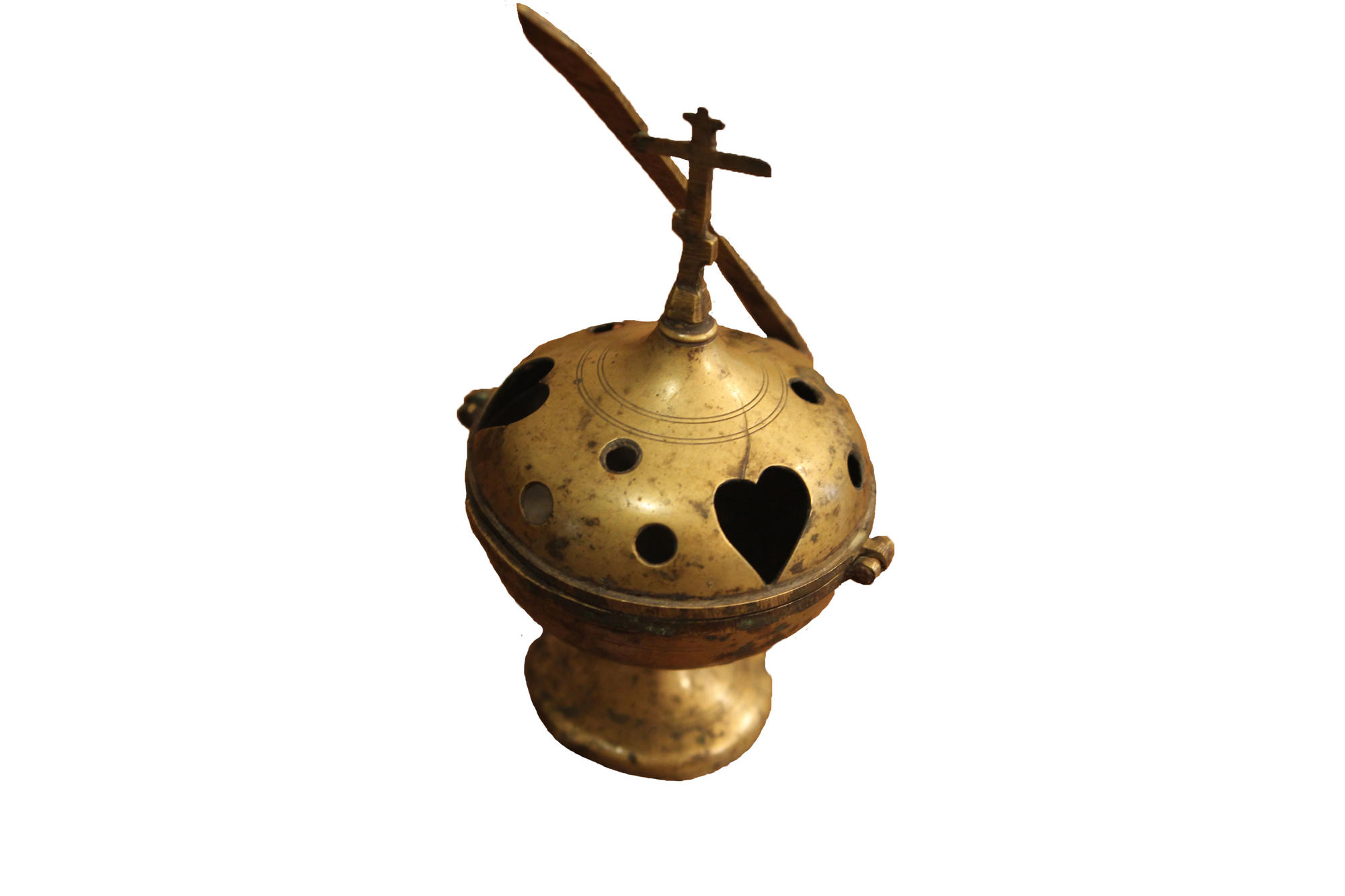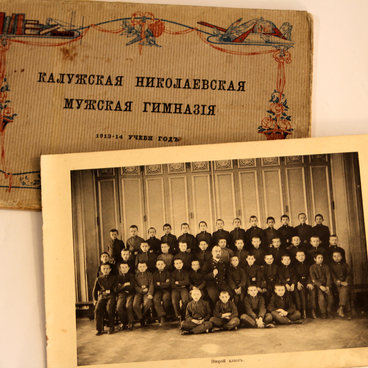A hand censer is a small portable incense burner, which is also often called a cell or home censer. Researchers believe that this type of censer appeared in Russia in the pre-Mongol period. Russian craftsmen traditionally created Byzantine type incense burners that looked like a small bucket or bowl with a handle. Unlike the more common church thuribles suspended from chains, the hand censer’s handle is tightly attached to the side of the bowl.
The hand censer displayed at the museum was made in Russia in the 18th century. It is made in the form of a brass bowl on a round stand and has a folding handle. The censer is covered with another bowl, which repeats the shape of a church dome with a cross on its top. Heart-shaped and round holes are cut out in the censer’s cover, from which smoke comes out.
Today, only clergy can use traditional thuribles suspended from chains. Hand censers are most often used by Old Believers. Contemporary Orthodox Christians following an old and almost forgotten tradition also incense their homes with a hand censer on their own without inviting priests.
The censer is filled with coal and frankincense, special aromatic wood resin put on top of it. It is produced only by monasteries. Incense can be of different types - each used for certain services. For example, the so-called royal incense is intended for the most important religious fetes, while the altar incense is of slightly inferior quality compared to the royal one and is used for daily incense burning.
When the frankincense is burning, it exudes incense smoke. The frankincense itself symbolizes parishioners’ prayers, while the fragrance of the incense in the temple means that requests have been graciously accepted. Orthodox priests incense both the temple and its visitors during the service. This process is called censing. Censing can be complete, if smoke covers the entire church, or minor if only the altar and the people standing in front of the alter-screen are incensed. Censing of parishioners symbolizes the descent of the Holy Spirit on all believers, while the ritual, during which a clergy goes with a censer around the altar stone, signifies a bloodless sacrifice to God. This tradition has been known since ancient times. The Old Testament describes the Lord telling Moses to conduct a symbolic sacrificial rite - censing.
The hand censer displayed at the museum was made in Russia in the 18th century. It is made in the form of a brass bowl on a round stand and has a folding handle. The censer is covered with another bowl, which repeats the shape of a church dome with a cross on its top. Heart-shaped and round holes are cut out in the censer’s cover, from which smoke comes out.
Today, only clergy can use traditional thuribles suspended from chains. Hand censers are most often used by Old Believers. Contemporary Orthodox Christians following an old and almost forgotten tradition also incense their homes with a hand censer on their own without inviting priests.
The censer is filled with coal and frankincense, special aromatic wood resin put on top of it. It is produced only by monasteries. Incense can be of different types - each used for certain services. For example, the so-called royal incense is intended for the most important religious fetes, while the altar incense is of slightly inferior quality compared to the royal one and is used for daily incense burning.
When the frankincense is burning, it exudes incense smoke. The frankincense itself symbolizes parishioners’ prayers, while the fragrance of the incense in the temple means that requests have been graciously accepted. Orthodox priests incense both the temple and its visitors during the service. This process is called censing. Censing can be complete, if smoke covers the entire church, or minor if only the altar and the people standing in front of the alter-screen are incensed. Censing of parishioners symbolizes the descent of the Holy Spirit on all believers, while the ritual, during which a clergy goes with a censer around the altar stone, signifies a bloodless sacrifice to God. This tradition has been known since ancient times. The Old Testament describes the Lord telling Moses to conduct a symbolic sacrificial rite - censing.


